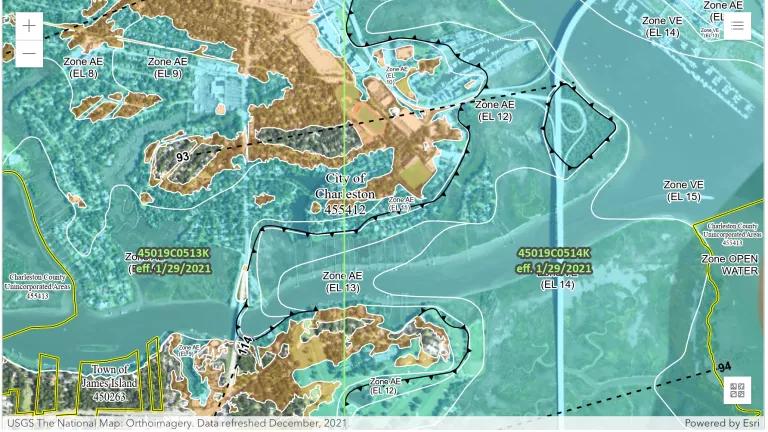Meeting This Moment: How the Bipartisan Infrastructure Deal Can Put Communities First
The infusion of federal funding represents a major catalytic opportunity to invest in places and communities most in need first.

It’s been six months since President Biden signed the historic Infrastructure Investment and Jobs Act (IIJA). The $1.2 trillion bipartisan infrastructure deal presents a once-in-a-generation investment to embed community-led solutions, equity, and climate priorities in our nation’s infrastructure. This funding, combined with the American Rescue Plan Act’s (ARPA) broader flexibility guidance granted for the $1.9 trillion stimulus package, becomes one of the most significant federal investments to U.S. cities, states, and tribal lands at over $3.1 trillion to be obligated and spent by 2026.
The infusion of federal funding represents a major catalytic opportunity to invest in places and communities most in need first.
The Bipartisan Infrastructure Law remains the largest investment in clean energy, water, broadband, rail, and public transit in our country’s history, and it’s an unparalleled opportunity to invest in equity solutions and tackle climate change. In context, the 2009 American Recovery and Reinvestment Act (ARRA) stimulus funding in response to the great recession was nearly $800 billion, of which 10 percent was allocated for transportation, water, energy efficiency, the environment, and public lands with a six-year window for spending. The infrastructure and stimulus package is nearly four times that amount of funding, with four years left of spending. And it needs a strategic plan to address the harms caused by past spending and divisive infrastructure investment.
The reality remains communities have been over-planned, overpromised, and overwhelmed by government bureaucracy. As a result, many community-based organizations will need technical assistance to navigate the federal process, influence the decision-making process, and unlock the resource for transformational change. Additionally, the federal and state governments will need to ensure that funding does not repeat historical harms, so coordination and consultation will be critical, specifically with communities most likely to be negatively affected by the unprecedented amount of dollars.
With that vision, President Biden established an Infrastructure Implementation Task Force, co-chaired by Mitch Landrieu, the White House Infrastructure Implementation Coordinator and former mayor of New Orleans. All relevant agencies, states, and territories were directed to appoint an Infrastructure Implementation Coordinator to break down implementation silos within the federal government.
Further, the administration released an infrastructure guidebook that provides an overview of the nearly 400 new and existing programs funding from transportation to climate, energy, and the environment, and launched Build.gov, where users can quickly review and identify eligible funding programs under the law by agency, eligible recipient, and program name.
The administration has demonstrated that it will use all authority to make good on its promise and progress toward Justice40, which aims to ensure that federal agencies deliver at least 40% of relevant benefits to low-income, vulnerable and underserved communities.
It’s important to note that in the Justice40 commitment, 40% of benefits does not equate to 40% of investments; there are no statutory dollars for Justice40 funding in the infrastructure bill. Justice40 has not been codified into law or resourced through the federal appropriations process by Congress, limiting any enforcement by the federal agency on states to implement the vision set forth by the interim guidance issued by the White House. Since non-federal partners will implement over 90 percent of the Bipartisan Infrastructure Law funding, Justice40 remains nothing more than a bold aspiration that 40 percent of the U.S. population represented by minority groups would receive 40 percent of relevant benefits. And if that’s the case, then public officials should strive for Justice100 at the state and local government levels so that all federal dollars would have co-benefits for communities.
Ultimately states, tribal, and local government leaders will determine how the federal infrastructure funding will be spent. Despite the administration’s whole-of-government approach to advance racial equity and address the climate crisis through executive order, Congress did not enact strong equity and climate performance measures provisions.
There remains minimal funding for community-based organizations to unlock the federal infrastructure dollars and limited accountability for states to focus on equity, climate, and community visions. As a result, community advocates will need to ensure they are engaged in the process by:
- Reviewing existing community and neighborhood plans and ensuring they are part of the public planning process in their region.
- Prioritizing key issue areas for their community and identifying the public entity and officials responsible at the local, regional, state, and federal levels.
- Attending and participating in public meetings engaged in your issue of interest and establishing a relationship with the staff and members of the council, board, and commission.
- Identifying potential funding opportunities, determining the eligible entity—who can be awarded the funds you require and learning about the budget cycle—how and when funds are allocated.
- Establishing a relationship with others in your community interested in similar issues and partnering whenever possible.
Successful implementation of the Infrastructure Investment and Jobs Act at the state, tribal, and local levels will require direct advocacy, technical assistance support, accountability, and flexible funding for communities to meet this moment. In response, NRDC will be working in service to the movement and moment to center the needs of community-based partners, shovel-worthy projects, climate-focused projects, and equity-centered plans.


